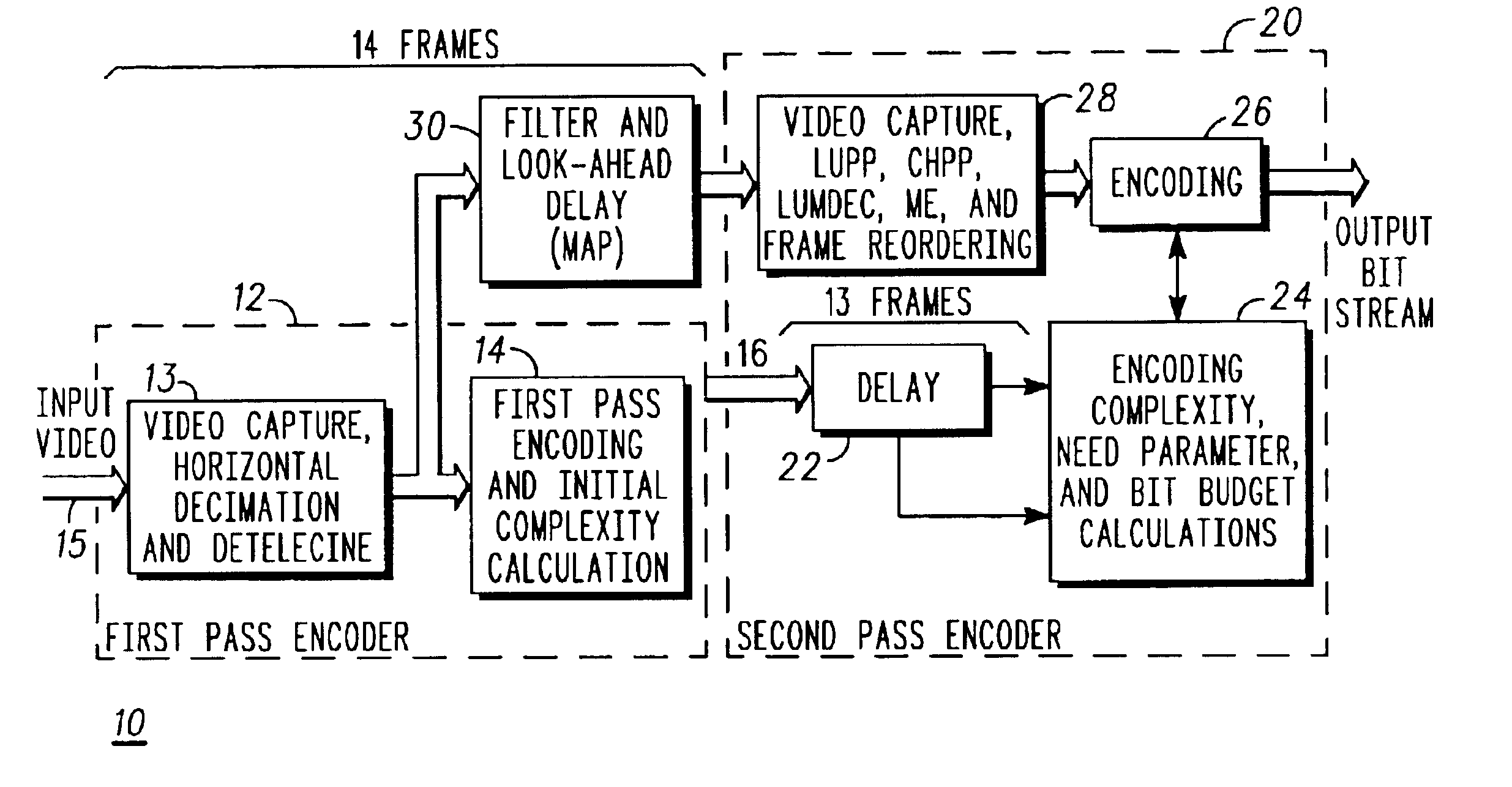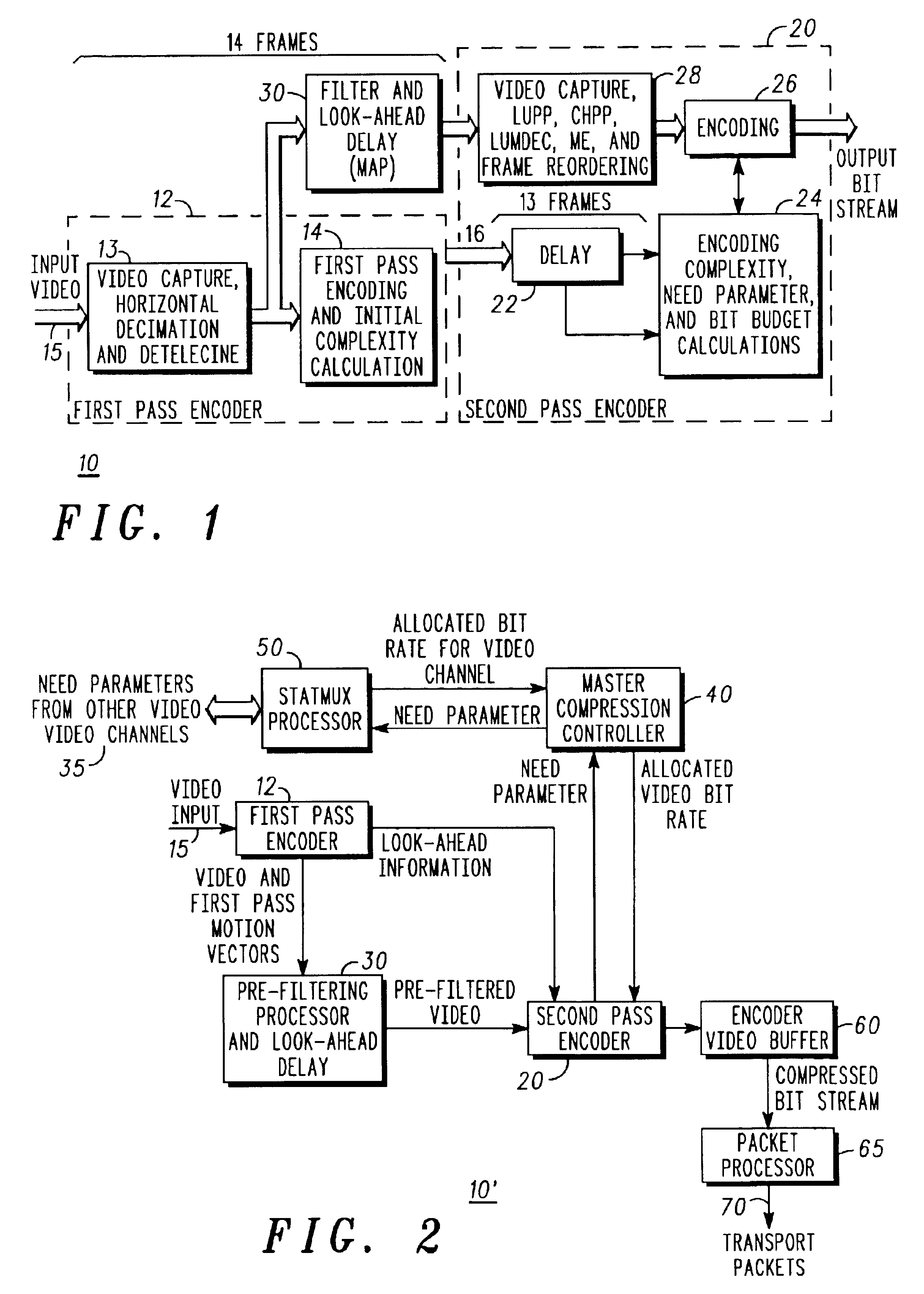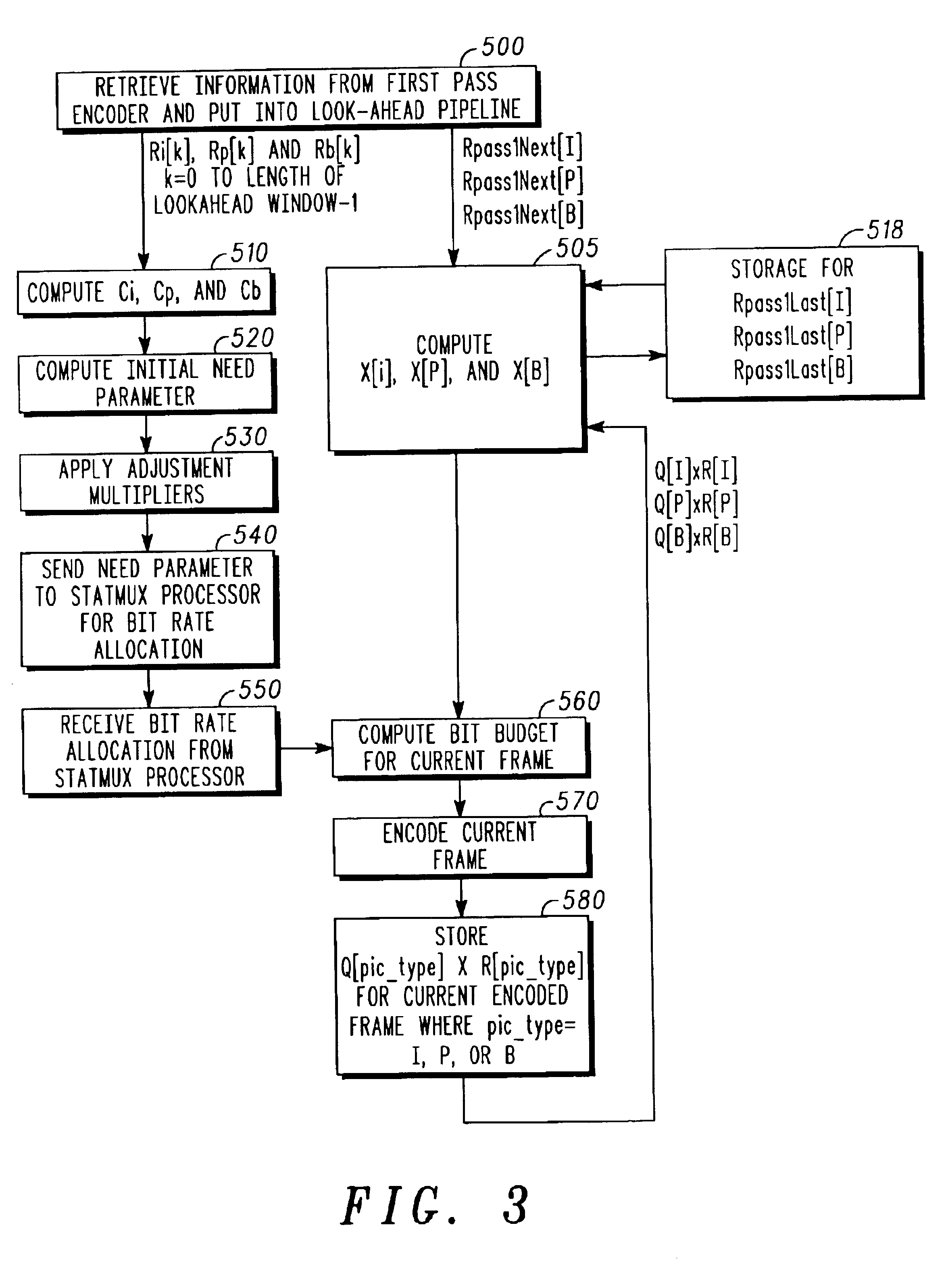Methods and apparatus for rate control during dual pass encoding
a dual-pass encoding and rate control technology, applied in the field of digital video processing improvement systems, can solve the problems of limiting such an approach, adding expense and complexity, and limiting the complexity of a frame until it is known, and achieve the effect of fine tuning the control of the bit rate at the macroblock level
- Summary
- Abstract
- Description
- Claims
- Application Information
AI Technical Summary
Benefits of technology
Problems solved by technology
Method used
Image
Examples
Embodiment Construction
[0022]The ensuing detailed description provides preferred exemplary embodiments only, and is not intended to limit the scope, applicability, or configuration of the invention. Rather, the ensuing detailed description of the preferred exemplary embodiments will provide those skilled in the art with an enabling description for implementing a preferred embodiment of the invention. It should be understood that various changes may be made in the function and arrangement of elements without departing from the spirit and scope of the invention as set forth in the appended claims.
[0023]The illustrated embodiments of the invention provide both improved rate control and improved statistical multiplexing for use in a dual pass encoding scheme. In particular, the illustrated embodiments provide the following improvements:
[0024]1. combining statistics from first pass encoding and second pass encoding to improve rate control;
[0025]2. selectively summing the bit count (complexity measure) of the f...
PUM
 Login to View More
Login to View More Abstract
Description
Claims
Application Information
 Login to View More
Login to View More - R&D
- Intellectual Property
- Life Sciences
- Materials
- Tech Scout
- Unparalleled Data Quality
- Higher Quality Content
- 60% Fewer Hallucinations
Browse by: Latest US Patents, China's latest patents, Technical Efficacy Thesaurus, Application Domain, Technology Topic, Popular Technical Reports.
© 2025 PatSnap. All rights reserved.Legal|Privacy policy|Modern Slavery Act Transparency Statement|Sitemap|About US| Contact US: help@patsnap.com



